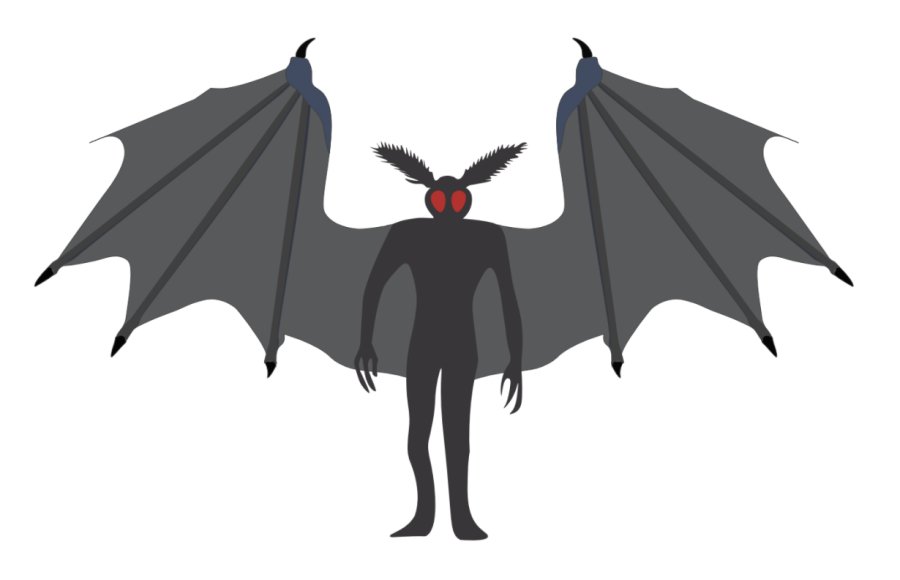Junior Chloe Jones wears her hat with Mothman, one of her favorite cryptids, on it. For Jones, cryptids have been a long-time interest. She said she has done extensive research on them, especially Mothman. According to her, the human interest in cryptids stems from the curiosities of the unknown and the chance that mythical creatures actually exist on Earth.
“I think people still look for cryptids because it’s just something cool to believe in, like if there’s something else on this Earth,” Jones said. “Not just humans and [ordinary] animals, but cryptids like Mothman.”
Cryptids, or mythical creatures that are said not to exist by mainstream science, have sparked the interest for many over centuries. This human interest in mythical creatures has evolved, even creating a new field of study called cryptozoology. Bigfoot, Mothman, Yetis and the Loch Ness Monster are examples of the many known cryptids in the world.
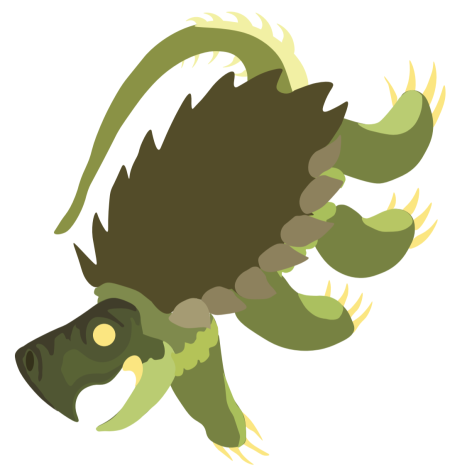
Yet, many people do not believe in these mythical creatures. Various researchers have debunked sightings and claims of seeing these cryptids. However, cryptozoologists continue to search for them, despite the disagreements with mainstream science. According to Jeff Wamsley, cryptozoologist and owner of the Mothman Museum in Point Pleasant, W. Va., people still search for these mythical beasts because of the chance that they truly exist.
“It’s the thrill of the hunt I guess,” Wamsley said via email, “being the first to make a discovery on something that many do not believe exists.”
As an author of various books on Mothman, and even appearing in documentaries, Wamsley said he has interviewed some of the witnesses of Mothman. According to him, there is persuasive evidence that Mothman exists.
“I have interviewed and known many witnesses (who say they saw Mothman),” Wamsley said. “There are many photos and eyewitness accounts (of) encounters.”
Jones said zoologists have pointed out various flying animals that would have explained the Mothman sightings. One of them, according to Jones, is the sandhill crane.
“There’s a species of bird [called the sandhill crane] that is almost tall as a person, has a six-foot wingspan and it has red markings around its eyes,” Jones said. “And one of the beliefs of Mothman is that he has red eyes. So many zoologists believe that Mothman was just a (sandhill crane) flying over people.”
However, Jones said she felt doubtful of the zoologist’s claims.
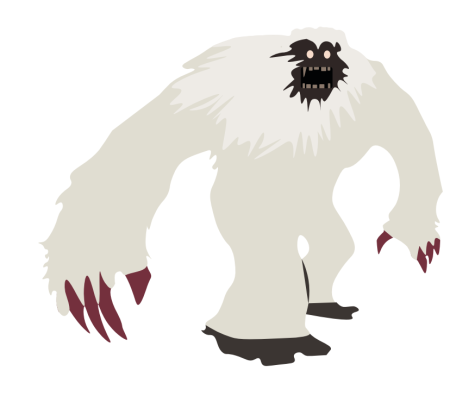
“Well, I’m not sure about Mothman because the people who have spotted him said that it looked like a man with a muscular body, but with the head of a moth and wings of a moth,” she said. “I don’t really think you could mistake it with an animal.”
Celeste Morow, a senior who said she enjoys learning about cryptids, said her love for horror contributed to her interest in cryptids.
“I like fun ones like Mothman, Bigfoot and the Loch Ness Monster. Skinwalkers, I guess, could also be put in,” she said. “I just think they’re kind of spooky, and I’m all into that horror stuff.”
Morow had a different opinion from Jones on the mythical creatures. She said although cryptids are interesting, she doubts their existence.
“I feel like a giant moth flying around West Virginia doesn’t seem (real),” Morow said. “And for Bigfoot, people have been looking for him for so long. And all the evidence (consist of) blurry photos, so there’s nothing concrete.”
But while she doubted the existence of cryptids, Morow said she did believe that there are creatures humans have not discovered yet. She said the ocean, being a vast ecosystem, could have animals not known to man.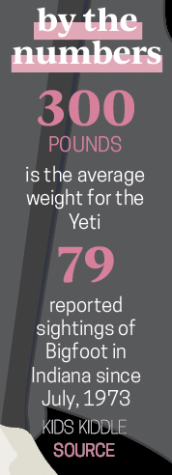
“As a joke, (I believe in cryptids). But seriously, I think there’s only a small chance. Like maybe the Loch Ness Monster (exists) in the ocean since we don’t know what’s down there,” she said.
Despite being a cryptid enthusiast, Jones also said she has had some hesitation in her belief of cryptids.
“I think there could be a possibility, but I’m more of a person of science,” she said. “Like, I would believe it if there was actual physical proof. But, I mean, having the idea that Mothman and other cryptids are out there is something cool to think about.”
Nonetheless, Jones said the opposition to cryptids from mainstream science does not discourage her.
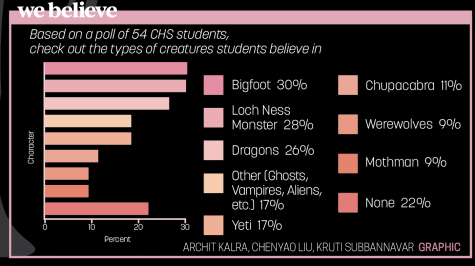 “It’s just fun to believe in things that don’t seem realistic,” she said. “I guess it’s kind of like a hobby. Just researching these cryptids and seeing all the stories that people have told about them. It’s just something I’ve found to be entertaining.”
“It’s just fun to believe in things that don’t seem realistic,” she said. “I guess it’s kind of like a hobby. Just researching these cryptids and seeing all the stories that people have told about them. It’s just something I’ve found to be entertaining.”
People interested in cryptids, whether a cryptozoologist like Wamsley or an ordinary student like Jones, will always have one goal in mind, and Morow summed it up in her own words.
“There’s a possibility that it could be real,” she said. “People want to be amazed by new discoveries.”

































![AI in films like "The Brutalist" is convenient, but shouldn’t take priority [opinion]](https://hilite.org/wp-content/uploads/2025/02/catherine-cover-1200x471.jpg)









































![Review: “The Immortal Soul Salvage Yard:” A criminally underrated poetry collection [MUSE]](https://hilite.org/wp-content/uploads/2025/03/71cju6TvqmL._AC_UF10001000_QL80_.jpg)
![Review: "Dog Man" is Unapologetically Chaotic [MUSE]](https://hilite.org/wp-content/uploads/2025/03/dogman-1200x700.jpg)
![Review: "Ne Zha 2": The WeChat family reunion I didn’t know I needed [MUSE]](https://hilite.org/wp-content/uploads/2025/03/unnamed-4.png)
![Review in Print: Maripaz Villar brings a delightfully unique style to the world of WEBTOON [MUSE]](https://hilite.org/wp-content/uploads/2023/12/maripazcover-1200x960.jpg)
![Review: “The Sword of Kaigen” is a masterpiece [MUSE]](https://hilite.org/wp-content/uploads/2023/11/Screenshot-2023-11-26-201051.png)
![Review: Gateron Oil Kings, great linear switches, okay price [MUSE]](https://hilite.org/wp-content/uploads/2023/11/Screenshot-2023-11-26-200553.png)
![Review: “A Haunting in Venice” is a significant improvement from other Agatha Christie adaptations [MUSE]](https://hilite.org/wp-content/uploads/2023/11/e7ee2938a6d422669771bce6d8088521.jpg)
![Review: A Thanksgiving story from elementary school, still just as interesting [MUSE]](https://hilite.org/wp-content/uploads/2023/11/Screenshot-2023-11-26-195514-987x1200.png)
![Review: "When I Fly Towards You", cute, uplifting youth drama [MUSE]](https://hilite.org/wp-content/uploads/2023/09/When-I-Fly-Towards-You-Chinese-drama.png)
![Postcards from Muse: Hawaii Travel Diary [MUSE]](https://hilite.org/wp-content/uploads/2023/09/My-project-1-1200x1200.jpg)
![Review: "Ladybug & Cat Noir: The Movie," departure from original show [MUSE]](https://hilite.org/wp-content/uploads/2023/09/Ladybug__Cat_Noir_-_The_Movie_poster.jpg)
![Review in Print: "Hidden Love" is the cute, uplifting drama everyone needs [MUSE]](https://hilite.org/wp-content/uploads/2023/09/hiddenlovecover-e1693597208225-1030x1200.png)
![Review in Print: "Heartstopper" is the heartwarming queer romance we all need [MUSE]](https://hilite.org/wp-content/uploads/2023/08/museheartstoppercover-1200x654.png)




